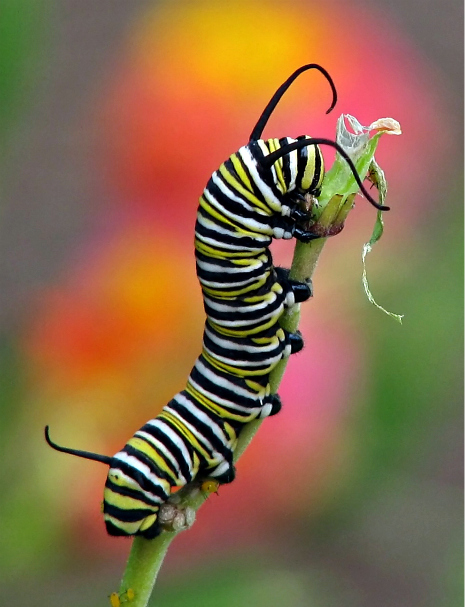If you are like most gardeners, you enjoy beneficial garden guests. What 's not to love about Butterflies? They float in and out, and seem so carefree. They add so much to animation and aesthetic value of any flowerbed or garden. This year, I'd like to expand my efforts and have more Butterflies in my garden. I thought I would share some information resources.
Butterflies are indeed beautiful, but did you know they also play an important role as pollinators, along with honeybees? How can you encourage these floating jewels of the air to make your garden their "Summer Place"?

Photo Credit: Don Sutherland. Used under a Creative Commons license.
1) Plant attractive species for them. Seen above and below with these butterflies are butterfly weeds, which grow in natural habitats, and are a good choice for home gardeners seeking to attract butterflies. Depending on the variety of butterflies in your area there are literally dozens of plants that serve as butterfly food (nectar-bearing plants). If you're going to choose the all-time best "top three" that will attract a variety of species, go with Butterfly Weed, Purple Coneflowers, and New England Aster.Your goal should be to encourage, attract, and retain butterfly populations in your garden.

Photo Credit: Used with Permission of Julie A. Brown at Flickr. All rights reserved.
2) You need to plant host plants for the baby butterflies! Baby butterflies are caterpillars, and they are born hungry and need a particular kind of plant to feed on.
Remember that before you see the beautiful colors of their wings and enjoy them, they look like this (this is a Monarch Butterfly caterpillar):

Photo Credit: Vicki's Nature at Flickr, used under Creative Commons License.
One area that you may want to change your thought process on is, planting a little extra, for purposes of sharing.....I'm not kidding! In most cases they won't destroy your garden plants (althought there are a few exceptions). A further reconstruction of your gardening thought process may be the methods you use for pest control and timing of application. Be careful that pesticide (organic OR conventional) does not cause unintended consequences of eliminating species you meant to attract, retain, and encourage, or their young. For a list of Butterfly host plants that Butterflies can lay their eggs on and which make good sources for the caterpillars, try the extensive information at The Butterfly Site. Further advice on plants can be found at Wildflower.org through the work of the University of Texas at Austin. There, you can search by state to find plants native to your area that are compatible with particular species of Butterflies.
Learn about what you can do to conserve and encourage populations of Butterflies in your area! They are under intense pressure from factors that include changing climate, over-use and misuse of pesticides, and lack of knowledge in some cases. You will be rewarded by their beauty and their role in the pollination of plants that is so critical all around the world to produce the food and flowers that we enjoy.
Have a wonderful week! ~JB was here.
 Julie A. Brown Posted on
Julie A. Brown Posted on  Tuesday, February 7, 2012
Tuesday, February 7, 2012 





